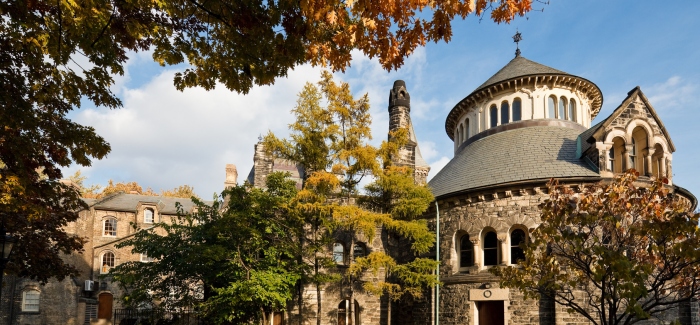Part of the elite US group of Ivy League schools, Harvard and Yale are among the world’s most acclaimed and competitive universities. Of the eight Ivy League members, these two are among the highest-ranked in the QS World University Rankings®. In the 2020 edition, Harvard is ranked third in the world and Yale 17th.
Both excel across the full spectrum of academic subjects, and both (like all the Ivy League schools) are based within the north-eastern New England region. However, while Harvard and Yale have much in common, there are also some points of difference, which may help you pick between the two if you’re fortunate enough to be faced with that choice.
Here’s a look at how these two top Ivy League schools compare on key indicators, with an at-a-glance overview followed by a more in-depth explanation. Find out which would be best for you: Harvard or Yale?
|
|
Harvard University |
Yale University |
|
QS World University Rankings® 2020 |
• Ranked third worldwide in 2020 • Ranked first in the world with both academics and graduate employers • 40th for faculty/student ratio • Eighth for research impact (citations per faculty member) • 186th in the world for percentage of international faculty members, and 221st for international students |
• Ranked 17th worldwide in 2020 • Ranked ninth in the world by academics and seventh by employers • Fifth for faculty/student ratio • 190th for research impact (citations per faculty member) • 224th in the world for percentage of international faculty members, and 249th for international students |
|
Subject strengths* |
Ranked second in the world for arts & humanities 12th for engineering & technology
First for social sciences & management |
Sixth in the world for arts & humanities =61st for engineering & technology 12th for life sciences & medicine
Eighth for social sciences & management |
|
Location |
Cambridge, Massachusetts Just north of Boston, on the north-east coast of the US |
New Haven, Connecticut Separated from New York by the Long Island Sound |
|
Student community |
About 22,000 students, of which 15,250 are postgraduates |
About 13,433 students – 5,964 undergraduates and 7,469 postgraduates Around 2,996 are international (22 percent of students overall) |
|
Fees and funding |
For 2019/20, annual tuition fees for undergraduates are $47,730 ($51,925 including all fees). 55% of undergraduates receive need-based aid, and Harvard provides need-blind admission for all students. |
For 2019/20, annual tuition fees for undergraduates are $55,500 (plus a $125 Student Activities Fee). Yale is also need-blind to all students, both domestic and international. 64% of undergraduates received financial aid in 2017/18. |
*Based on the broad subject areas in the QS World University Rankings by Subject 2019.
QS World University Rankings® 2020
We’re really talking elite institutions here. Both Harvard and Yale are firm fixtures at the top of the QS World University Rankings. Harvard, ranked third in the world, is pretty much unbeatable on most of the indicators used to create the rankings. It’s actually the top-rated university in both of QS’s huge global surveys of academics and graduate employers. Yale is ranked ninth by academics and seventh by employers.
As well as having one of the world’s strongest international reputations, Harvard also scores very well on the indicator for research citations per faculty member, ranked eighth in the world on this measure. Yale is 190th for research citations – not quite as influential as Harvard, but still very much part of a leading group of universities.
For student-faculty ratio (a measure of the number of academic staff employed per enrolled student), Yale is the stronger of the two. It ranks fifth in the world on this indicator, while Harvard is 40th.
The last two indicators used in compiling the QS World University Rankings assess the international diversity of students and staff. Given that they’re well-known, desirable places to study and work, it’s unsurprising to find both universities score well on these indicators – though perhaps not as highly as you might expect. Harvard is ranked 151st for international faculty members, while Yale is also within the top 200 at 186th. When assessing the percentage of international students, Harvard comes 221st while Yale is 249th.
Subject strengths
A look at the QS World University Rankings by Subject enables you to get a deeper insight into the subject strengths of both universities, with both Harvard and Yale boasting strong reputations across a broad range of subjects.
In the 2019 edition, Harvard is ranked first in the world for 12 out of the 48 subjects covered in this year’s ranking, and while Yale isn’t the world leader for any particular subject, it’s nonetheless included in the top 10 for 12 subjects.
The table below shows you how these two top Ivy League schools directly compare for each subject. If no rank is given, it’s highly likely the subject isn’t available at that particular university.
|
Harvard and Yale in the QS World University Rankings by Subject 2019 |
||
|
|
Harvard University |
Yale University |
|
Accounting & finance |
1st |
13th |
|
Agriculture & forestry |
-- |
51-100 |
|
Anthropology |
3rd |
11th |
|
Archaeology |
5th |
25th |
|
Architecture |
5th |
48th |
|
Art & design |
-- |
29th |
|
Biological sciences |
1st |
8th |
|
Business & management |
1st |
24th |
|
Chemistry |
=3rd |
21st |
|
Classics & ancient history |
5th |
9th |
|
Communication & media studies |
-- |
=32nd |
|
Computer science & information systems |
7th |
=46th |
|
Dentistry |
7th |
-- |
|
Development studies |
2nd |
-- |
|
Earth & marine sciences |
3rd |
=12th |
|
Economics |
1st |
8th |
|
Education & training |
2nd |
-- |
|
Engineering (chemical) |
-- |
20th |
|
Engineering (electrical) |
=7th |
51-100 |
|
Engineering (mechanical) |
5th |
101-150 |
|
English language & literature |
3rd |
5th |
|
Environmental sciences |
5th |
=16th |
|
History |
1st |
4th |
|
Law |
1st |
4th |
|
Linguistics |
5th |
51-100 |
|
Materials science |
=7th |
51-100 |
|
Mathematics |
2nd |
18th |
|
Medicine |
1st |
8th |
|
Modern languages |
1st |
6th |
|
Nursing |
-- |
9th |
|
Performing arts |
8th |
=17th |
|
Pharmacy |
2nd |
=15th |
|
Philosophy |
6th |
12th |
|
Physics & astronomy |
2nd |
18th |
|
Politics |
1st |
9th |
|
Psychology |
1st |
7th |
|
Social policy & administration |
2nd |
-- |
|
Sociology |
1st |
9th |
|
Statistics |
2nd |
38th |
|
Theology, divinity & religious studies |
1st |
=6th |
Location
Both universities are located in the New England group of states on the north-east coast of the US, an area which is home to all eight Ivy League schools.
Harvard is in Cambridge, Massachusetts, just to the north of Boston. Named after the UK’s Cambridge, and also home to the Massachusetts Institute of Technology (ranked first in the world), this university town has a longstanding tradition of scholarship and is very much a student-centered community.
Cambridge is also known for its attractive squares, tree-lined river banks, historic architecture and healthy arts and culture scene. Nearby, Boston has earned a reputation as one of the US’s leading urban centers in everything from architectural innovation to legislative change.
Yale is in New Haven, a city in the south of Connecticut on the shore of the Long Island Sound – an estuary leading to the Atlantic Ocean which separates the states of Connecticut and New York. Described by Yale president Richard C. Levin as “large enough to be interesting, yet small enough to be friendly”, the city has a diverse selection of restaurants, museums, music venues and annual festivals.
Student community
Harvard is significantly the larger of the two; its 22,000-strong student body is almost twice the size of Yale’s 13,433. Reflecting their strong research focus, both have large numbers of graduate and professional students – these make up almost 70 percent of the student community at Harvard and 55 percent at Yale.
Both offer internationally diverse student communities. At Harvard, more than 23 percent of students are international, and at Yale about 22 percent.
Tuition fees
It’s no secret that higher education at prestigious US universities doesn’t come cheap – but the good news is that the Ivy League schools also tend to offer relatively high levels of financial support. At Harvard, undergraduate tuition fees for 2019/20 are set at US$47,730. When additional fees, accommodation, travel and personal expenses are considered, the annual cost of attendance is estimated at $73,800-$78,200.
At Yale the figures are similar; undergraduate fees for 2019/20 are $55,500. When accommodation and other expenses are accounted for, the total is about $75,925. Students will also need to consider the extra cost of securing health insurance.
At graduate level, fees depend on which graduate school the course is offered by. At Harvard’s Graduate School of Arts and Sciences, full tuition fees for 2019/20 are $48,008, and students are advised to budget at least an additional $40,208 per 10 months for living costs. Similarly, at Yale’s Graduate School of Arts and Sciences, fees for 2019/20 are $43,300, and living costs for a nine month period are estimated at $24,015.
The costs for degrees such as medicine are, as is typical, a little higher. Harvard’s Medical School (graduate level only) charges tuition fees of $63,400 for 2019/20. And at Harvard Business School, an MBA program will currently cost $73,440 per year, with a total annual budget of $110,740 recommended.
Financial aid
Those figures may seem unaffordable for most, but most students at Harvard or Yale are eligible for financial aid. At Harvard, 55 percent of undergraduate students receive need-based aid through the university’s financial aid program. Financial aid officers work to determine your demonstrated need and your family’s expected contribution, with students from families with an annual income below $65,000 expected to pay nothing, and more than 20 percent of students’ families paying nothing.
Yale similarly offers need-based financial aid, pledging to cover 100 percent of undergraduate students’ “demonstrated financial need”. 64 percent of Yale undergraduates receive aid, with an average grant amount of $52,800 in the 2018/19 academic year. An impressive 86 percent of the class of 2018 graduated with no student loan debt.
At both universities, large numbers of graduate-level students also receive grants, loans, fellowships, scholarships and also paid employment. Whichever level you’re studying at, and whatever your subject, extensive information on the costs of study and how to apply for financial aid is provided on the universities’ and graduate schools’ websites.
These high levels of financial support are rooted in the fact that both Harvard and Yale have need-blind admission policies. This means students’ finances are not taken into account when making a decision about whether to offer them a place, and the university pledges to contribute as much as is required to enable students to attend once they’ve been accepted. This policy applies to all students, whether they come from within the US or elsewhere.
So, which of these top Ivy League schools gets your vote, Harvard or Yale? Let us know in the comments below!
This article was originally published in November 2013. It was last updated in June 2019 to incorporate the latest data from the QS World University Rankings and other sources.
Want more content like this? Register for free site membership to get regular updates and your own personal content feed.













